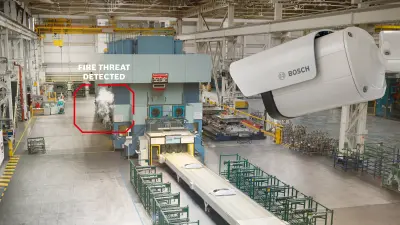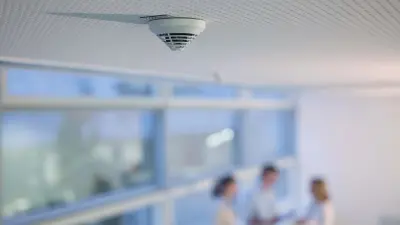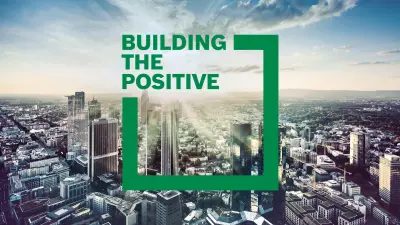Fire alarm systems contribute to building safety and can also support environmental protection
Every fire in buildings or industrial facilities not only causes economic damage, but also harms the environment and can threaten life and health. For this reason alone, fire alarm systems make an important contribution to sustainability. But other aspects such as durability, flexibility or remote monitoring also ensure that Bosch systems can help reduce resource consumption and improve operational efficiency.


Preventing emissions
Fires always contribute to air pollution. Emissions include particulate matter, smoke and soot particles. It becomes even more dangerous when materials burn and release emissions extremely harmful to the environment and health. Bosch fire alarm systems help detect fires early, supporting efforts to minimize their spread in buildings and facilities worldwide – with high reliability and speed.
In challenging environments such as industrial sites or the waste and recycling industry a video-based fire detection solution brings additional advantages. The unpredictable combination of materials and substances in these sites and the conditions and operational activities make them hazardous environments with continual high fire risks. Small button batteries, aerosol cans, remnants of cosmetic or cleaning products, cigarette lighters or broken gadgets form a dangerous mix. Fires in such environments can spread rapidly due to the presence of combustible waste and dry, dusty conditions. This allows fires to spread over a wide area within minutes, posing risks to human health and the surrounding environment due to the release of smoke containing potentially harmful substances.
AVIOTEC fire and smoke detection cameras are well-suited for the conditions at production facilities with large storage areas. They keep constant watch for the first signs of flames or smoke – day and night, outdoors and indoors. This allows swift fire and smoke detection, which can contribute to reducing the extent of harmful emissions.
Conserving resources

Whether recycling materials, goods, technical equipment or entire buildings, fire alarm systems help to conserve valuable assets. Additionally, the consideration of resource efficiency is reflected throughout the entire life cycle of Bosch solutions. They are designed to be backwards compatible. This means that existing infrastructure that is still functioning well can be integrated and continue to be used.
The robust design of components supports a long service life, even under demanding conditions. Decades of R&D experience and extensive in-house testing contribute to high-quality performance beyond standard requirements. The upward compatibility and openness of the systems make it possible to add new technology, extensions and replacements to existing installations as requirements change. This approach helps maintain system functionality and extend its operational life.
Saving energy and CO2
Until now, the installation, maintenance, and updates of fire panels and peripherals all had to be done on-site. Traditionally, fire safety system integrators traveled frequently, contributing to CO2 emissions. By leveraging IoT, fire safety services can be optimized, potentially leading to significant reductions in time, energy, and emissions. Secured cloud-based data storage with continual access means system integrators can conduct many of their regular fire safety services for every customer, across multiple sites, from afar.
A case study of a chemical plant in Londrina, Brazil, illustrates how remote services can contribute to operational efficiency and potentially reduce travel-related emissions. This hazardous environment produces highly flammable and combustible products, such as fertilizers. The business location of their fire safety system integrator is 520 km away. From this distance, the company enables full-time monitoring of events and rapid response to failures – thanks to remote services.

Working together for sustainability
Find out what we do to increase long-term energy efficiency and reduce carbon footprints. You can call it sustainability... We call it: Building the positive.
